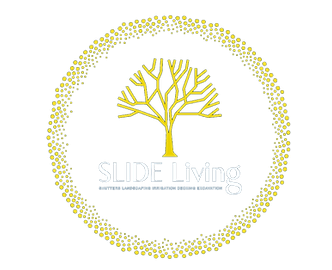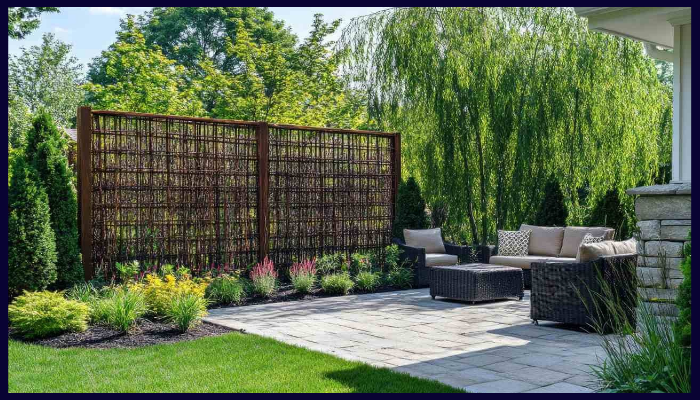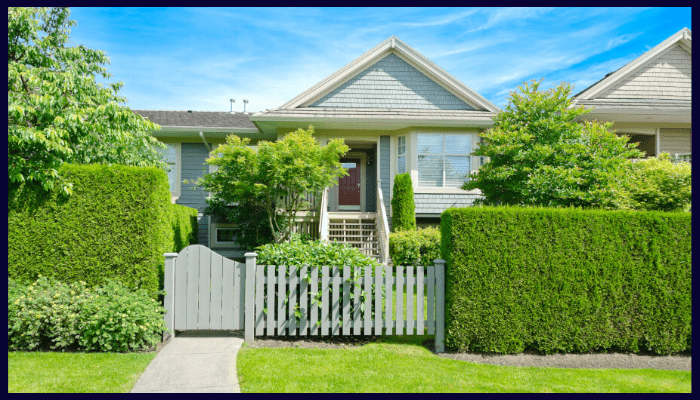Residential Fencing vs Living Fence (Hedges & Plants): Pros & Cons
Table of Contents:
Pros and cons of residential fencing vs living fences with hedges and plants is one of the first debates Albury homeowners face, especially when deciding on the best type of residential fencing for their property boundary
This guide compares residential fencing (timber, Colorbond, steel) and living fences. For example, hedges, shrubs, and living walls.
Understanding common residential fencing problems such as weather wear, rust, and timber decay can also help homeowners decide if a living fence or hybrid option suits their long-term goals better.
So you can decide based on cost, maintenance, climate suitability and long term value for Albury properties.
Want immediate privacy and low maintenance? Choose a structural fence. Prefer wildlife, cooling and a softer, more natural look and can commit to ongoing trimming?
Choose a living fence or hybrid. Not sure? Book a free onsite consultation with Slide Living.
Understanding the Local Context: Albury Climate, Soil & Landscape
Albury's Climate & Seasonal Challenges
Albury cops hot, dry summers and cool winters with occasional frosts and rainfall.
These extremes create real challenges for plants, including water stress in summer and frost damage in winter months.
Wind exposure can also affect both fences and living barriers.
Soil Conditions, Drainage & Local Vegetation
Good drainage matters for hedges and shrubs, as poor soil quality and compacted ground can stunt growth and create gaps.
Many native species in the Albury area are well-suited to local conditions.
Examples include Lomandra and Westringia. These plants are hardy and eco-friendly.
Garden Space & Property Type Considerations
Smaller urban yards often favour compact fencing solutions. Larger properties benefit from hedging, which needs room for roots and canopy spread.
Choosing between a living fence or manufactured fence? Your choice should account for the available backyard space and your garden layout.
Quick Comparison Table
| Feature | Residential fence | Living fence (hedge) |
|---|---|---|
| Upfront cost | Medium to High | Low to Medium |
| Ongoing maintenance | Low (repairs, paint) | High (trimming, watering, fertilising) |
| Time to privacy | Immediate | 2 to 4 years (species dependent) |
| Environmental benefit | Low | High (biodiversity, carbon, shade) |
| Security | High (impenetrable barrier) | Medium (soft barrier; can have gaps) |
| Climate resilience | High (Colorbond/steel) | Medium (choose drought-tolerant natives) |
| Best for | Small spaces, immediate privacy | Nature lovers, large blocks |
What is a Residential Fence?
Common Fence Materials & Styles
Residential fencing options include:
Timber (wood)
Chain link
Slat fencing
Tubular steel
These materials are durable, long lasting, and can be customised for shape, finish and privacy. Learn more about types of residential fences.
Pros of Residential Fencing
Provides immediate privacy and security
Requires low maintenance compared to plants
Acts as a strong wind and sound barrier
Offers design flexibility and a predictable appearance
Cons of Residential Fencing
Higher upfront cost compared to planting shrubs
Limited environmental benefits and can reflect heat or noise
Materials can decay over time
Extreme weather events may lead to repair costs
What is a Living Fence? (Hedges, Shrubs, Living Walls)
Types of Hedging Plants & Living Wall Options
Living fences include evergreen hedges, native shrubs and climbers.
For small spaces, living walls or vine screens on trellises provide natural alternatives. And they do so without eating up too much yard space.
Pros of Living Fences (Hedges & Plants)
Environmentally friendly and supports biodiversity by attracting birds, insects and wildlife.
Natural noise and dust filters, providing shade and cooling benefits.
Softens the property boundary with seasonal greenery.
Can improve soil health and contribute to sustainable landscaping practices.
Cons of Living Fences
High maintenance with regular trimming, watering and fertilizing.
Takes 2 to 4 years to establish full privacy depending on species.
Vulnerable to pests, drought, and frost in winter months.
Risk of overgrowth, gaps, or neighbor disputes over roots and branches.
Side by Side Comparison: Fencing vs Living Fence
| Category | Fencing | Hedges |
|---|---|---|
| Cost & Return Over Time | Higher upfront cost but predictable lifespan. | Cheaper to plant but ongoing maintenance can add up. Both options can add resale value depending on style and upkeep. |
| Maintenance & Upkeep | Occasional repainting, repair, or replacement of panels. | Regular trimming, watering, fertilizing, and seasonal pruning. |
| Climate, Wind & Weather | Withstand strong winds and storms but may need repair. | Act as windbreaks but vulnerable to drought and frost. |
| Security, Barrier & Protection | Reliable, impenetrable barrier. | Provide softer protection but can develop gaps. |
| Environmental & Biodiversity | Limited ecological benefits. | Improve biodiversity, provide habitat, and support green infrastructure. |
Matching Choice to Your Lifestyle & Priorities
Scenarios & Use Cases
Busy homeowners often prefer low maintenance residential fencing. It provides strong boundaries with minimal upkeep required.
If your property is close to a road or neighbouring houses, consider fence designs for noise control solid Colorbond or timber panels with minimal gaps can help reduce traffic or neighbourhood noise.
Nature lovers may opt for living fences that support birds and wildlife. These natural boundaries help enhance biodiversity and create a greener environment.
Large blocks benefit from hedges that create natural shelter. They add greenery while offering shade and protection from wind.
Small urban yards work better with structural fences or living walls. These options maximise limited space while maintaining privacy and security.
Decision Matrix / Checklist
Score each factor 1 to 5 for your situation:
Budget (1 = limited, 5 = large)
Timeframe for privacy (1 = can wait, 5 = immediate)
Maintenance capacity (1 = none, 5 = frequent)
Desire for wildlife/biodiversity (1 = none, 5 = strong)
Bushfire risk (1 = low, 5 = high)
≤ 2.5 → favour residential fencing. ≥ 3.5 → favour living fences. Between 2.5 to 3.5 → consider hybrid.
Hybrid & Combined Solutions
Many homeowners choose both: a fence for structure and security, combined with shrubs or climbers for natural softness.
For example, vines grown on a timber or Colorbond fence provide layered protection. If you’re planning a small backyard upgrade, check out our tips for DIY residential fencing projects before you start.
Local Examples & Project Spotlights from Slide Living
Fence Projects in Albury Wodonga
lide Living has installed timber and Colorbond fences suited to local soil and weather conditions. They ensure long lasting performance that meets council requirements.
Hedge or Garden Projects / Native Plant Use
Local gardens in Albury Wodonga are using more native, low-maintenance plants. For example, Lomandra and Westringia are popular choices.
These create sustainable hedges that withstand local climate extremes. Plus, they provide habitats for birds and pollinators.
Conclusion
Choosing between a residential fence and a living fence depends on your property type, garden space, budget and lifestyle.
Fences offer immediate privacy and security, while hedges provide eco friendly benefits and a softer appeal. Many Albury homeowners find a hybrid solution delivers the best of both worlds.
Ready to decide the best boundary for your property? Book a free onsite consultation with our Albury team.
We'll inspect soil and microclimate, advise on fence types and provide a tailored quote.
Frequently Asked Questions
-
Hardy native species like Lomandra and Westringia are commonly recommended. Other drought-tolerant shrubs and groundcovers may work well too. It depends on the soil and frost conditions.
-
Most hedges take 2 to 4 years to fill out, depending on species, soil quality and watering.
-
Yes. A structural fence with shrubs or climbers gives you quick privacy. Plus, it adds the environmental benefits of plants.
-
Chain link and timber fencing are generally the most cost effective options for small spaces.
-
Living fences are more environmentally friendly, supporting biodiversity, carbon storage and soil health.
-
Both can boost resale value. A fence signals security and clear boundaries, while an established hedge creates natural appeal and shade.
-
Residential fencing, particularly Colorbond or steel, is long lasting and requires minimal upkeep.
-
Yes. Non-combustible materials like steel or Colorbond can be safer than dense shrubs in bushfire conditions (NSW RFS). Therefore, the pros and cons of residential fencing vs living fences with hedges and plants also extend to safety.
Greg Hair, owner of Slide Living, has over a decade of experience in delivering high-quality landscaping and outdoor living solutions across Albury-Wodonga and surrounding regions.
Known for his attention to detail and great customer care, Greg has transformed hundreds of properties, specialising in everything from fencing, decking and home irrigation.
SLIDE Living is fully licensed and insured, ensuring top-notch workmanship and customer satisfaction on every project.





